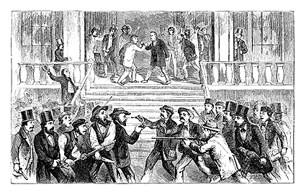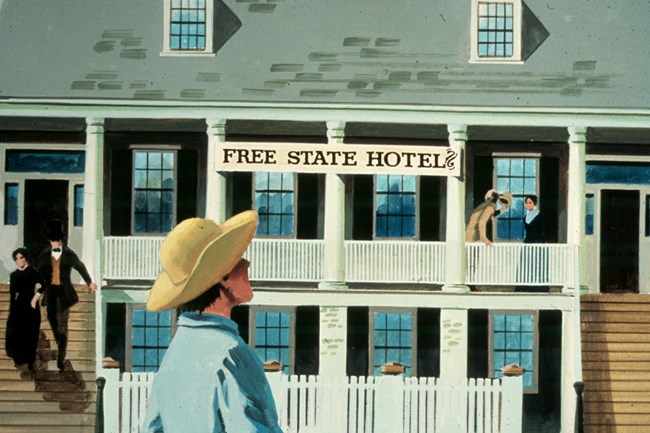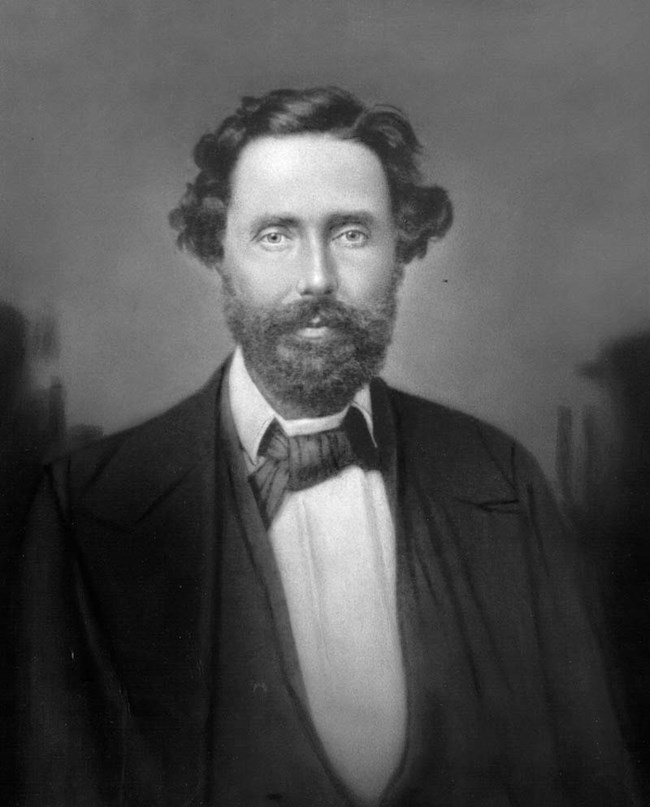
John Greenleaf Whittier The years of 1854-1861 were a turbulent time in Kansas territory. The Kansas-Nebraska Act of 1854 established the territorial boundaries of Kansas and Nebraska and opened the land to legal settlement. It allowed the residents of these territories to decide by popular vote whether their state would be free or slave. This concept of self-determination was called popular sovereignty'. In Kansas, people on all sides of this controversial issue flooded the territory, trying to influence the vote in their favor. Rival territorial governments, election fraud, and squabbles over land claims all contributed to the violence of this era. Three distinct political groups occupied Kansas: pro-slavers, free-staters and abolitionists. Violence broke out immediately between these opposing factions and continued until 1861 when Kansas entered the Union as a free state on January 29th. This era became forever known as "Bleeding Kansas". Murder and MayhemDuring "Bleeding Kansas", murder, mayhem, destruction and psychological warfare became a code of conduct in Eastern Kansas and Western Missouri. Well-known examples of this violence include the massacre in May 1856 at Pottawatomie Creek where John Brown and his sons killed five pro-slavery advocates. Locally, trouble began in the summer of 1856 when a group of about 30 pro-slavery settlers from South Carolina arrived in Bourbon County. It was suspected that they were sponsored by the Southern Emigrant Aid Society and were members of the Dark Lantern Societies. These societies terrorized free-state settlers and attempted to drive them from Kansas. 
A Town Divided Fort Scott and the surrounding area were not immune from the violence. The division of the opposing factions was clearly visible at the site of the "old fort". The military had abandoned Fort Scott in 1853. Two years later, the buildings were sold at a public auction and the former fort immediately became the nucleus of a rapidly growing town. Two of the buildings became hotels. One, a former officer's quarters, was opened as the Fort Scott or Free State Hotel. Located right across the parade ground was the Western or Pro-Slavery Hotel, a former infantry barracks. The residents of Fort Scott were predominately pro-slavers, while free-staters and abolitionists dominated the surrounding countryside. Radicals of each faction terrorized the town throughout the "Bleeding Kansas" era. 
1858: A Most Violent Year By 1858, trouble had intensified in southeast Kansas. Radical elements from other theaters of the conflict were now converging on this area. James Montgomery became a leader of free state forces and was involved in several violent incidents.
In the struggle following Rice's rescue, former Deputy Marshal John Little, a pro-slavery advocate, fired shots into the ranks of the free-staters. Little peered out of a window of his father's store (the former post headquarters) to observe the effects of the shooting. His movement was noted by a free stater who shot and killed him. Little's fiancé, Sene Campbell, wrote Montgomery a letter reprimanding him and saying that he was a "minister of the devil, and a very superior one too..."
A Nation Divided "Bleeding Kansas" was part of the political storm that occurred throughout the United States before the Civil War. The anti-slavery forces prevailed as Kansas entered into the Union a free state on January 29, 1861. This turbulence illustrated the beginning of the terrifying bloodshed that was to come during the Civil War. Suggested Readings
Related Sites
|
Last updated: May 25, 2022
